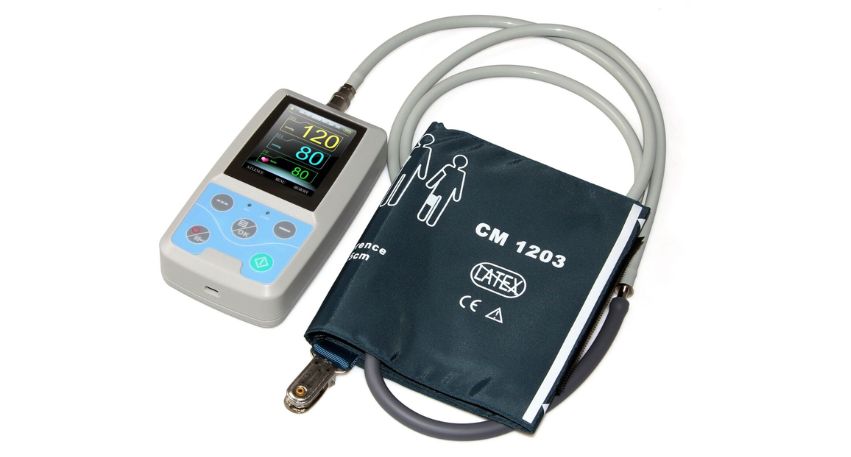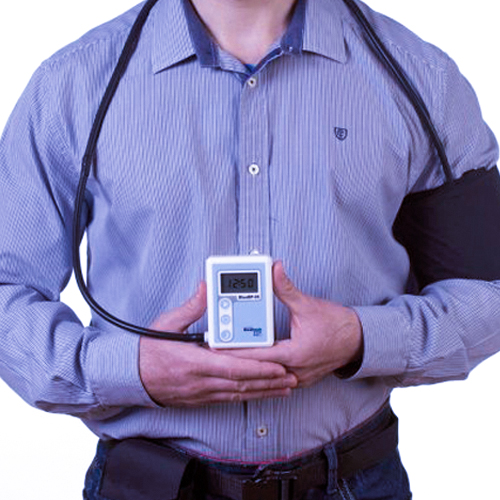Understanding the Importance of the ABPM Test in Hypertension Management
Ambulatory Blood Pressure Monitoring (ABPM) is a crucial tool in handling high blood pressure. By offering constant blood pressure analyses over 24 hours, it provides insights that typical measurements can not. This method can disclose conditions such as white layer syndrome and masked hypertension. Recognizing these subtleties is important for efficient person care. As healthcare progresses, the ramifications of ABPM in forming tailored treatment strategies become increasingly significant. What does this mean for the future of hypertension administration?
What Is Ambulatory Blood Pressure Monitoring (ABPM)?
Ambulatory Blood Pressure Monitoring (ABPM) is a method that permits the constant dimension of blood pressure over a 24-hour duration while individuals take part in their day-to-day tasks. This innovative strategy includes using a mobile tool that automatically takes blood pressure readings at set intervals, generally every 15 to 30 mins. ABPM provides an extensive profile of blood pressure fluctuations throughout the night and day, capturing variants that may be missed out on throughout basic workplace measurements.It is specifically advantageous for identifying conditions such as high blood pressure and white layer syndrome, where patients display elevated analyses only in medical setups. By supplying real-time data, ABPM boosts the precision of hypertension analyses and aids in customizing therapy strategies. The understandings gained from this monitoring might result in far better management of cardio health and wellness, enhancing the value of ABPM in contemporary medical method.
How ABPM Varies From Traditional Blood Pressure Dimensions
While typical blood pressure measurements normally rely upon analyses taken in a medical setting, ABPM offers an extra extensive approach by examining blood pressure over a full 24-hour period. Traditional methods often create a limited variety of readings that might not catch changes in blood pressure throughout the day. In contrast, ABPM enables for continuous monitoring, providing understandings into variants during different activities, such as sleeping and exercising.Additionally, traditional measurements may be affected by the patient's anxiousness during a medical professional's go to, understood as "white layer disorder," possibly resulting in erroneously high analyses. ABPM mitigates this issue by gathering data in an acquainted atmosphere, generating a more exact depiction of a person's blood pressure. The tool commonly takes measurements at routine periods, making certain thorough data collection. This fundamental distinction highlights the importance of ABPM in offering a complete photo of a patient's blood pressure profile.
Advantages of ABPM in Hypertension Monitoring
Using Ambulatory Blood Pressure Monitoring (ABPM) offers considerable benefits in handling high blood pressure. It provides precise and constant blood pressure readings, helping to determine problems such as white coat disorder. This accurate information makes it possible for health care carriers to make even more customized therapy modifications tailored to specific client demands.
Accurate Blood Pressure Monitoring

Recognizing White Coat Syndrome
Ambulatory Blood Pressure Monitoring (ABPM) plays a considerable duty in identifying white coat disorder, a phenomenon where people display elevated blood pressure analyses in a scientific setting yet keep regular degrees in their daily lives. This condition can lead to misdiagnosis and unneeded therapy, complicating high blood pressure administration. ABPM provides a detailed analysis of blood pressure over a 24-hour period, catching variations that happen during day-to-day tasks and rest. By comparing these readings to facility measurements, medical care suppliers can compare true hypertension and white layer disorder. Inevitably, recognizing this disorder is crucial for tailoring ideal therapy approaches and preventing overtreatment, making sure that people receive care that properly mirrors their blood pressure status outside the professional setting.
Individualized Treatment Changes
Enhancing high blood pressure management through customized therapy adjustments becomes possible with the understandings acquired from ABPM. This technique provides continuous blood pressure monitoring, permitting doctor to determine patterns and changes that might not appear during standard office gos to. By understanding a patient's special blood pressure profile, clinicians can tailor therapy strategies that consider factors such as drug efficiency, lifestyle affects, and individual feedback to treatment. This individualized technique not only enhances person adherence however additionally improves overall outcomes by minimizing the danger of issues connected with unrestrained hypertension. Inevitably, making Recommended Reading use of ABPM empowers medical professionals to make educated choices, leading to more reliable monitoring approaches that line up with each individual's particular needs.
Identifying White Layer High Blood Pressure and Masked Hypertension
White layer high blood pressure takes place when people exhibit elevated blood pressure analyses in a scientific setting because of anxiety, while their measurements are normal in various other settings. On the other hand, concealed high blood pressure refers to individuals whose blood pressure is normal during clinical gos to yet raised in daily life. Comprehending these two phenomena is necessary for exact hypertension administration and therapy decisions.
Defining White Layer High Blood Pressure
Hypertension monitoring typically includes comparing numerous blood pressure conditions, especially white layer hypertension and concealed high blood pressure. White coat hypertension is identified by raised blood pressure analyses in medical settings, frequently as a result of anxiety related to medical settings. Individuals with this condition typically display regular blood pressure degrees outside of these settings. This phenomenon can bring about misdiagnosis and unnecessary therapy otherwise appropriately recognized. It is crucial for doctor to recognize this problem to stay clear of overtreatment and to guarantee accurate hypertension management. ABPM test in Bangalore. Making use of this article ambulatory blood pressure monitoring (ABPM) can aid separate white coat hypertension from continual high blood pressure, making it possible for a lot more effective and tailored therapy approaches for people experiencing this distinct blood pressure response
Comprehending Masked High Blood Pressure
Masked high blood pressure postures a significant challenge in high blood pressure management, as it typically goes undiscovered in clinical settings. This problem happens when a client's blood pressure readings are normal throughout clinical gos to yet elevated in your home or during daily tasks. Unlike white layer hypertension, where anxiety in a medical setting brings about temporary spikes in blood pressure, covered up hypertension can cause unacknowledged cardio threats. People might believe they have normal blood pressure, neglecting essential way of life modifications or treatments. Recognizing concealed high blood pressure is essential, as it can cause serious wellness problems gradually. Ambulatory Blood Pressure Monitoring (ABPM) is a reliable device for discovering this problem, enabling healthcare specialists to supply timely treatment and boost individual outcomes.
The Function of ABPM in Personalized Treatment Plans
As health care companies increasingly identify the significance of personalized care, the implementation of Ambulatory Blood Pressure Monitoring (ABPM) has ended up being important in customizing therapy prepare for people with hypertension. ABPM permits for continuous blood pressure measurement over 24-hour, disclosing patterns that may be missed out on during common workplace visits. This comprehensive information uses insights into an individual's blood pressure variability and nighttime levels, which are vital for comprehending total cardiovascular threat.
Interpreting ABPM Outcomes: Comprehending Patterns and Fads
Analyzing the results from Ambulatory Blood Pressure Monitoring (ABPM) calls for a keen understanding of numerous patterns and trends that arise from the accumulated data. Medical professionals analyze the 24-hour blood pressure account, distinguishing in between daytime and nighttime analyses to recognize prospective white-coat high blood pressure or concealed hypertension. A consistent elevation in daytime readings might suggest badly managed hypertension, while nighttime dips can signify reliable blood pressure management or nighttime high blood pressure, which presents added cardio risks.Trends gradually, such as sustained rises or variations, are additionally essential. Variability in readings can recommend underlying concerns, such as tension or medication non-adherence. In addition, the evaluation of blood pressure patterns in connection to day-to-day tasks can provide insights into way of living aspects influencing high blood pressure. By very carefully translating these outcomes, health care specialists can customize therapy approaches to improve person end results in hypertension management, eventually causing much better cardiovascular health and wellness.
The Future of Blood Pressure Monitoring and High Blood Pressure Treatment
Emerging modern technologies and advancements are positioned to reinvent blood pressure monitoring and high blood pressure care in the coming years. Wearable devices outfitted with advanced sensors are anticipated to supply continuous, real-time blood pressure analyses, enabling even more personalized therapy programs. These gadgets will certainly not just enhance individual engagement but also assist in remote monitoring by medical care companies, causing timely interventions.Artificial knowledge and maker learning algorithms will certainly play a crucial function in examining person information, recognizing trends, and anticipating hypertension-related difficulties. This predictive capability can bring about more aggressive administration approaches. Furthermore, telehealth solutions will likely increase, making it possible for individuals to speak with professionals and get tailored recommendations without the need for in-person visits.Furthermore, innovations in mobile applications may equip people to track their blood pressure individually, cultivating a sense of ownership over their health. Generally, the future of blood pressure monitoring and high blood pressure care shows up promising, with modern technology at its center.
Often Asked Inquiries

How Lengthy Does an ABPM Test Usually Last?
The ABPM examination commonly lasts 1 day. During this duration, a portable tool actions blood pressure at normal intervals, offering comprehensive information on an individual's blood pressure patterns throughout day-to-day activities and rest.
Can ABPM Be Used for Youngsters and Teenagers?
ABPM can undoubtedly be utilized my website for youngsters and teens - ABPM test in Bangalore. It supplies important understandings into their blood pressure patterns, aiding doctor accurately detect and manage hypertension in younger populaces, advertising far better lasting health outcomes

What Should I Stay clear of Before Taking an ABPM Test?

Prior to taking an ABPM test, individuals ought to prevent caffeine, nicotine, and strenuous workout, as these can briefly elevate blood pressure readings. Furthermore, it's advisable to avoid from using limited garments that may impede measurement precision.
Exactly how Frequently Should I Undertake ABPM Screening?
The regularity of ABPM testing differs based upon individual wellness demands. Typically, it is recommended every six to twelve months, particularly for those with uncontrolled hypertension or significant changes in blood pressure drug. Normal monitoring help efficient monitoring.
Is ABPM Covered by Insurance Strategies?
The coverage of ABPM screening by insurance strategies differs substantially. People must consult their specific insurance service providers to establish eligibility and any type of possible out-of-pocket expenditures connected with this analysis procedure for hypertension administration.